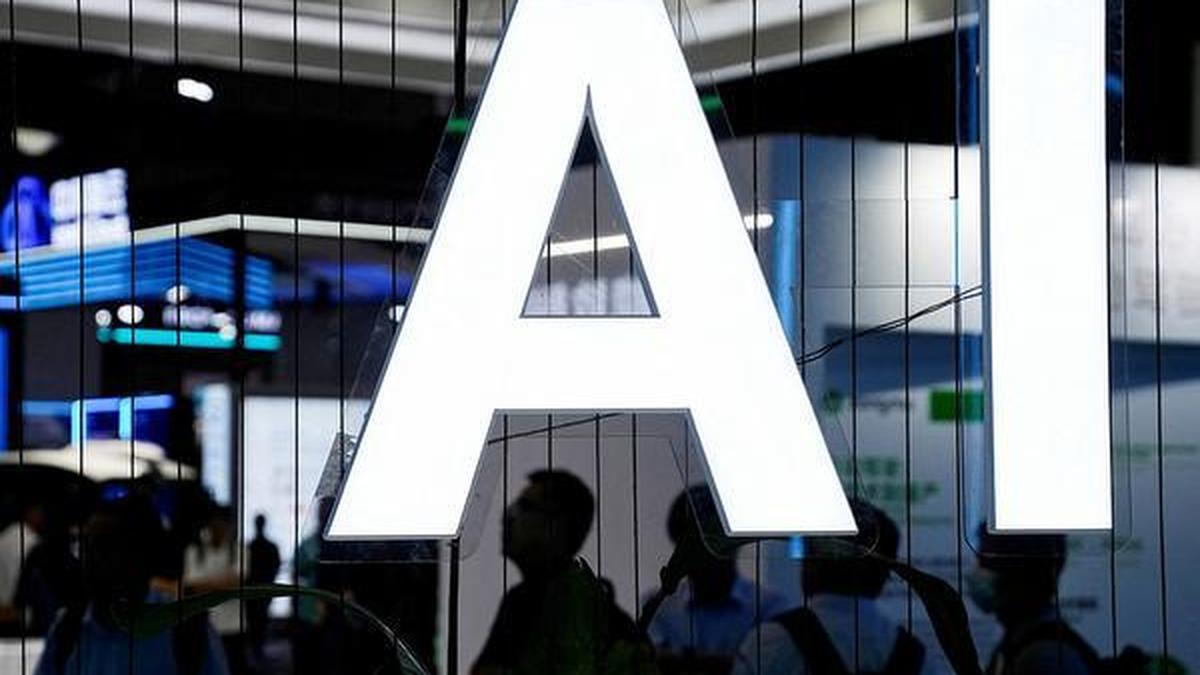Karl-Anthony Towns racks up 26 points and 13 rebounds in a 105-95 Knicks win over the Celtics.
NEW YORK – This is the Knicks’ series now.
Midway through the third quarter of Game 1 of the Eastern Conference semifinals back in May, the…

Karl-Anthony Towns racks up 26 points and 13 rebounds in a 105-95 Knicks win over the Celtics.
NEW YORK – This is the Knicks’ series now.
Midway through the third quarter of Game 1 of the Eastern Conference semifinals back in May, the…

Battlefield 6 Season 1 is right around the corner, and in preparation for its arrival, the devs have released a batch of patch notes going over the changes players can expect to see. These are largely based on the community’s consistent…

Japanese game developer Pocketpair has confirmed that it will not provide funding to game projects that use generative AI. John Buckley, communications director and publishing manager at Pocketpair, said that…

A previously unrecognized immune-cell population that may serve as a sensitive indicator of kidney disease severity and future progression risk was uncovered by research from Japan.1
The prospective observational study, published in

Major investors, spooked by AI exuberance yet wary of betting against it, are shifting from hyped-up stocks into potential next-in-line winners, reviving a strategy from the 1990s dotcom era that helped some sidestep the crash.
As U.S. stocks have hit successive records and AI chipmaker Nvidia’s valuation has surged beyond $4 trillion, professional investors have been trying to find ways to make money from the bull market while avoiding excessive risk.
Some are looking back to the 1990s internet boom, which spread from startups to telecoms and tech, and where hedge funds rode the wave by flipping out of highly-valued stocks before they peaked and picking others that had room to rise.
“What we are doing is what worked from 1998 to 2000,” said Francesco Sandrini, multi-asset head and Italy CIO at Europe’s largest asset manager Amundi.
He highlighted signs of irrational exuberance on Wall Street, such as frenzied trading in risky options pegged to the share prices of big AI stocks. But he said he expected the new tech enthusiasm to continue and hoped to bank gains via bets on reasonably valued assets that might rally next.
Sandrini said this involved trying to find “the highest growth opportunities that so far the market had failed to spot”, with moves into software groups, robotics and Asian tech.
Other investors also expected to edge out of Wall Street’s Magnificent Seven stocks after shares in Nvidia more than tripled in two years, but want to keep their diversification within the AI sphere.
ASSET MANAGERS NEED TO BE NIMBLE TO RIDE THE WAVE
“The odds of this (AI boom) being a bust are very high because you’ve got companies spending trillions and all fighting for the same market that does not yet exist,” said Goshawk Asset Management CIO Simon Edelsten, who worked on telecom IPOs at stockbroker Dresdner Kleinwort Benson in London in 1999.
He expected the next phase of AI fever to spread from Nvidia and others like Microsoft and Alphabet into
related sectors.
Timing the phases of a bubble has historically been a way to play it without the risk of trying to call the peak too early.
A study by economists Markus Brunnermeir and Stefan Nagel showed that hedge funds mostly did not bet against the dotcom bubble, but rode it skillfully enough to beat the market by about 4.5% per quarter from 1998-2000 and avoid the worst of the downturn.
They shed high-priced internet stocks in time to recycle profits into others before they caught the attention of less sophisticated investors.
“There were good profits to be made for the fleet of foot even during 2000 when the top came,” Edelsten at Goshawk said, adding the current market environment was similar to 1999.
He favoured IT consultants and Japanese robotics groups that can potentially pick up revenues from AI heavyweights, in what he said was the typical chronology of a market gold rush.
“When someone strikes gold, (you) buy the local hardware store where the prospectors will buy all their shovels.”
INVESTORS TRY TO STAY IN AI WITHOUT EXCESSIVE RISK
Investors are also attempting to benefit from the trillion of dollars so-called hyperscalers such as Amazon, Microsoft and Alphabet are committing to AI data centres and advanced chips without taking on more direct exposure to these companies.
Fidelity International multi-asset manager Becky Qin said uranium was her favoured new AI trade because power-hungry AI data centres could gobble up nuclear energy.
Kevin Thozet, investment committee member at asset manager Carmignac, was taking profits on Magnificent Seven stocks and building up a position in Taiwan’s Gudeng Precision, which makes delivery boxes for AI chipmakers including TSMC.
Asset managers are also concerned that the rush to build data centres could result in overcapacity, as in the fiber-optic cable boom in the telecoms industry.
“In any new technological paradigm we don’t get from A to B without excesses along the way,” said Pictet Asset Management senior multi-asset strategist Arun Sai.
Even though top AI stocks like Microsoft, Amazon, and Alphabet are being powered by strong earnings, he still sees “the building blocks of a bubble” and favours Chinese stocks as a hedge if rapid AI advancements in China sap Wall Street’s AI enthusiasm.
Some investors, though, do not favour this relative value approach to AI investing as a way to mitigate future losses.
Oliver Blackbourn, portfolio manager at Janus Henderson, said he was hedging his U.S. tech positions with European and healthcare assets lest an AI stock crash takes the U.S. economy down with it.
He said it was impossible to forecast how long the AI craze would roll on because calling the peak was usually only possible with hindsight.
“We’re in 1999 until the bubble pops.”
Published – October 25, 2025 09:55 am IST

Patients with extensive-stage

Dassault Systèmes (ENXTPA:DSY) reported annual earnings growth of 1.2%, a significant slowdown from its five-year average of 16.7%. Net profit margins slipped to 18% from last year’s 18.5%, while earnings are forecast to grow 10.2% per year, trailing the broader French market’s 12.2% outlook. The company’s revenue is expected to rise by 6.2% per year, outpacing the French market average of 5.4%. With the share price closing at €25.69, the results point to a period of slower but still positive growth. Profitability remains healthy and the stock trades slightly below its estimated fair value, leaving room for optimism among value-focused investors.
See our full analysis for Dassault Systèmes.
With the headline results in place, the next step is to see how these figures compare to the prevailing narratives that investors follow. We will set the latest numbers alongside the stories shaping market sentiment to spot where the consensus holds up or gets tested.
See what the community is saying about Dassault Systèmes
83% of Dassault Systèmes’ software revenues are now recurring, reflecting the steady expansion of its subscription business and supporting analysts’ expectations that profit margins will rise from 18.0% today to 22.3% over the next three years.
According to the analysts’ consensus view, predictable subscription streams and strong adoption of cloud-based and AI-powered products should structurally elevate net margins, especially as momentum builds across diverse industries and geographies.
The transition to subscription models anchors future profitability as recurring revenue streams offset near-term fluctuations in deal volume.
However, the consensus also notes that new product launches in high-growth sectors must overcome delays and execution challenges to fully realize this margin upside.
If you want to see how analysts think the cloud and recurring revenue story could supercharge margins, don’t miss the full details in the consensus narrative. 📊 Read the full Dassault Systèmes Consensus Narrative.
Analysts forecast Dassault Systèmes’ revenue will rise 6.2% annually over the next three years, exceeding the French market’s expected 5.4% growth, while earnings could reach €1.7 billion by 2028.
The analysts’ consensus view heavily supports the bullish case that expanding into high-growth verticals and accelerating adoption of cloud, AI, and automation offerings will drive double-digit earnings growth for years ahead.
Strong 3DEXPERIENCE and AI-powered product uptake is broadening the addressable market and positioning the company for subscription-led, higher-margin growth.
Continued investment in R&D and targeted acquisitions are intended to enhance competitive advantage, but analysts caution that execution risks in new sectors, especially Life Sciences, could moderate the growth trajectory.